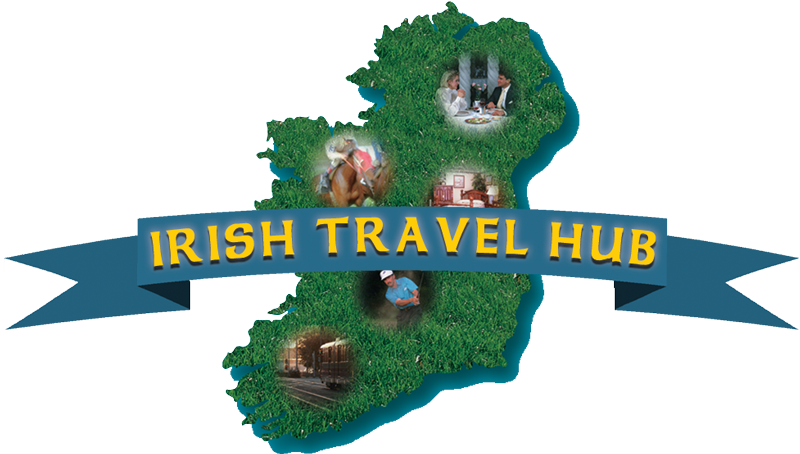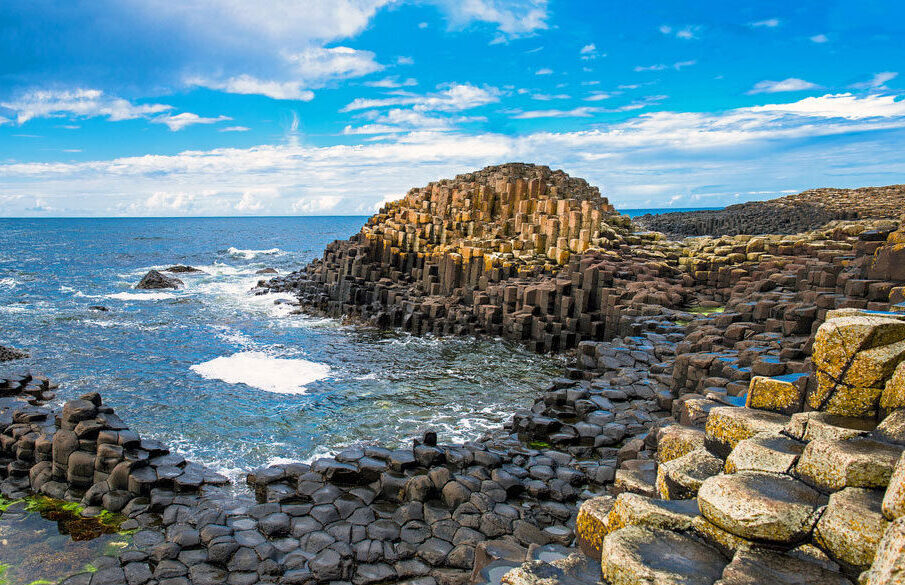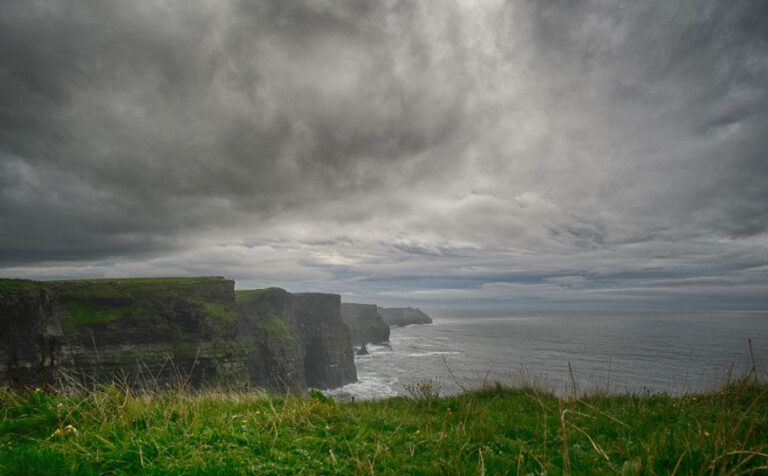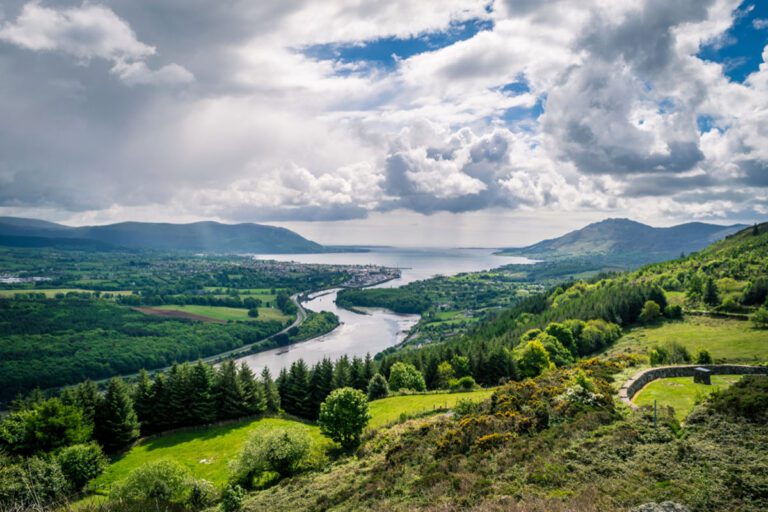The Giants Causeway is a natural wonder, formed by the power of the earth itself, and it stretches out along the rugged coastline of Northern Ireland like a serpent basking in the sun. It really is a marvel of nature that has been captivating visitors for centuries. It’s a place steeped in history, myth, and legend, and it all started long before any of us were around.
It all began millions of years ago, when volcanic eruptions spewed molten lava and ash across the landscape, forming a rugged plateau of basalt rock. Over time, the lava cooled and contracted, creating cracks and fissures that eventually turned into the iconic hexagonal columns that we see today.
Now, seemingly the name “Giants Causeway” comes from an old Irish legend that tells the story of two giants, Finn McCool and Benandonner. Finn was a giant from Ireland, and Benandonner was a giant from Scotland. They were bitter enemies, and one day, Finn decided he would build a causeway across the sea to Scotland so they could finally settle their score.
Whether or not Finn was an actual giant, we’ll never know for sure. But what we do know is that the Giants Causeway has been a source of fascination and inspiration for people for centuries. It’s been the subject of countless stories, poems, and songs, and has even played a role in scientific discoveries and theories.
I remember the first time I saw it, I was struck dumb by the beauty of it all. The hexagonal basalt columns rising up from the sea like ancient sentinels, each one perfectly formed, as if crafted by some divine hand. And the colors! Oh, the colors! The sea crashing against the rocks, the sky changing from blue to grey to pink and back again, it was like a symphony for the eyes.
The Giants Causeway is also a UNESCO World Heritage Site and a popular tourist attraction. It’s a testament to the power and beauty of nature, and a reminder that even in the midst of the hustle and bustle of modern life, there are still wonders to be found in the world around us.
So, if you ever find yourself in Northern Ireland, do yourself a favor and go see the Giants Causeway. It’ll take your breath away and fill your soul with wonder, just like it did for me.
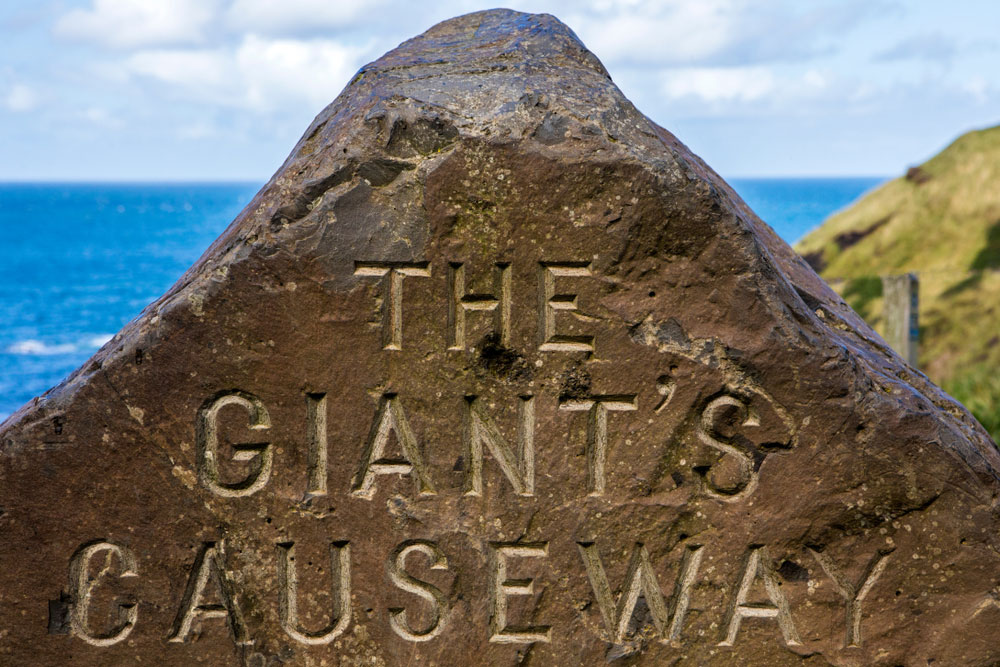
County Antrim is located in Northern Ireland and is known for its stunning coastal scenery, historic sites, and vibrant culture. Here are some of the top tourist attractions in County Antrim:
- Carrick-a-Rede Rope Bridge: A thrilling and scenic rope bridge that connects the mainland to a small island off the coast of Antrim.
- Dunluce Castle: A historic castle ruin that is perched on the edge of a cliff overlooking the sea.
- Old Bushmills Distillery: The oldest licensed distillery in the world, Bushmills has been producing whiskey since 1608. Visitors can take a tour of the distillery and sample some of its famous products.
- Dark Hedges: A beautiful avenue of beech trees that was featured in the hit TV show Game of Thrones.
- Carrickfergus Castle: A well-preserved medieval castle that was built in the 12th century and served as a military stronghold for many years.
- Glens of Antrim: A series of nine picturesque glens that offer stunning scenery, walking trails, and historic sites.
- Ulster Folk and Transport Museum: A museum that showcases the history and culture of Northern Ireland, with collections on folk life, transport, and industry.
- Whitepark Bay: A beautiful beach and nature reserve that offers stunning views of the coast and opportunities for hiking and birdwatching.
- Rathlin Island: A remote island off the coast of Antrim that is home to a population of puffins and other seabirds, as well as historic sites and beautiful scenery.
These are just a few of the many tourist attractions in County Antrim. With its stunning natural beauty and rich history, Antrim is a must-visit destination for anyone traveling to Northern Ireland.
Helpful Resources: Antrim Tourist Information
Recommended Reading:
- Titanic Belfast: A Fascinating Exhibition of the World’s Most Famous Ship
- Roaming the Ruins of Dunluce Castle: Uncovering Tales of Ghosts and Pirates
